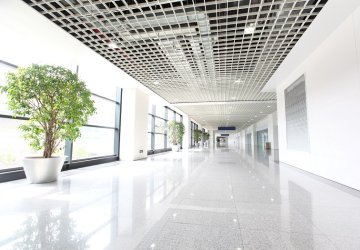
In German trains, the availability of seats is shown on a small screen, using reservations information. Travelers getting on board without booking in advance can see if a seat has been reserved for that route, and from which station. Travelers with a booking can find their seats more quickly because their reservation is shown above the seat. With much less irritation and much more comfort, this is how you create more capacity in the train. It’s an example of how you can work with information more intelligently.
The reservation data had been stored in the German railway operator’s system for years to help the conductor to check, but without anything being done with it for the passengers. This data is now used to inform and guide people. These days we use the same principle for buildings: “Smart Buildings” is the new buzzword in facility and real estate management.
More than just a pile of bricks
In days gone by, a building consisted of a pile of bricks and that was pretty much it. Of the investment, 80% went to architecture, and the rest comprised a tiny bit of technology, such as electricity or heating. Today, technology’s share can often reach up to half of the investment and this percentage is growing, because more and more installations are now finding their way into buildings. This technology is often not even operated by people, because the installations regulate themselves using sensors.
We are trying to make our buildings smarter with all manner of technical tricks, but are absolutely unaware of the fact that the buildings already contain a great deal of information which we could use. Your building is smarter than you think; all you need to do is make this information available and use it, not only for the building, but also for the users themselves.
Measuring, informing and guiding
As an example, take the volumes of information the building management system already has about occupation. When you enter a building, you often go through a door. So you could count the number of people present in the building. When you get out of the elevator, the elevator’s contents become around 175 pounds lighter per person…which allows you to calculate how many people get out at each floor. If you combine these details with the number of times that the door of the stairwell or the fire door opens, that tells you something about how many people are present on a floor. You can use this to inform others and send them to a different floor if it’s too busy.
How to make this information accessible is often astonishingly simple by looking at existing information in a different way. It’s not rocket science, but merely being aware of and developing the right application. Particularly in these modern times when almost everything can be measured with sensors, this can yield an absolute treasure chest of data. The Germans are renowned internationally for their organizational talents and punctuality, but have shown with this train example that they are also creative enough to find that treasure chest. And what they can do, we can do too.




















